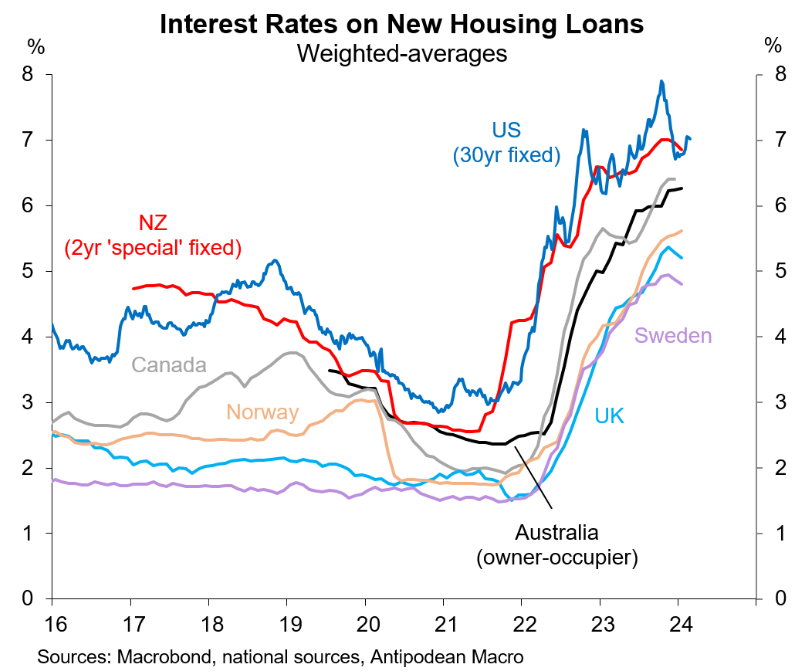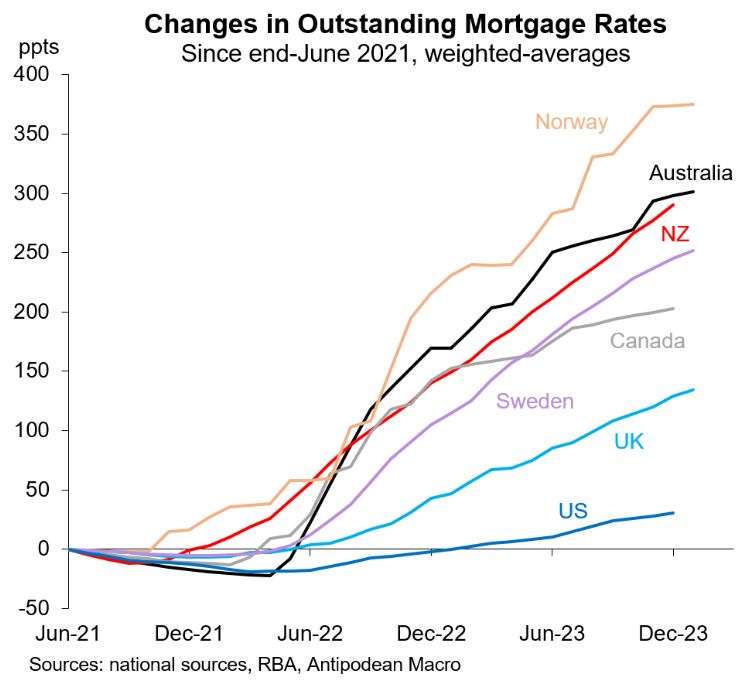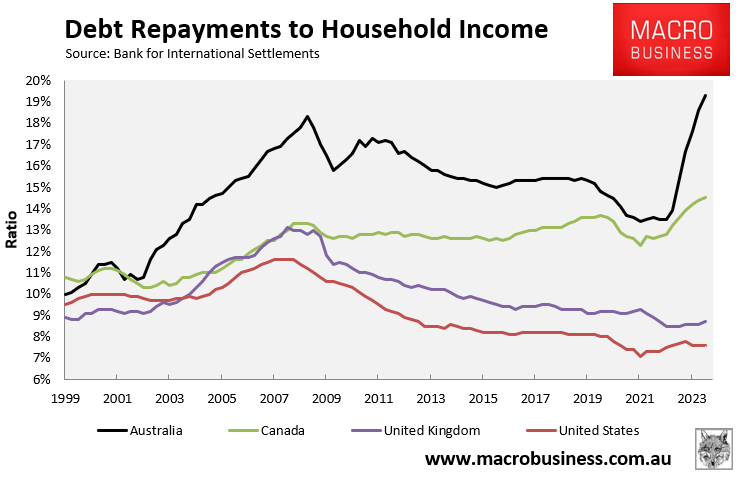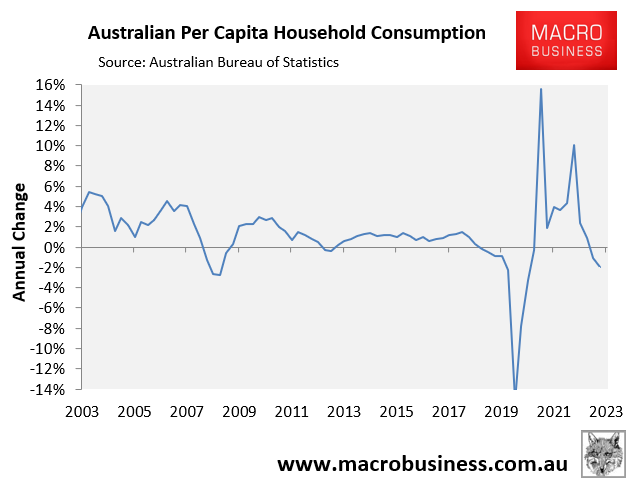Interesting charts by Justin Fabo at Antipodean Macro demonstrate how Australians have been particularly hard-hit by rising mortgage rates.
Although average interest rates on new housing loans have risen to around the average of developed nations:

The average interest rate on outstanding housing loans is among the highest in the developed world, behind Norway:

Separate data from the Bank for International Settlements (BIS) to the September quarter of 2023 shows that principal and interest debt repayments as a share of household income have risen far more than in other Anglo nations:

As shown above, Australian households devoted a record 19.3% of their incomes to debt repayments in the September quarter of 2023, versus just 14.5% in Canada, 8.7% in the United Kingdom, and 7.6% in the United States.
The reason for the oversized increase in debt repayments in Australia is because of our predominance of variable-rate mortgages.
This meant that increases in Australia’s official cash rate by the Reserve Bank of Australia (RBA) were passed onto mortgage holders more swiftly than elsewhere.
By way of comparison, while the United States Federal Reserve has hiked official interest rates by more than the RBA, meaning new mortgage rates have risen more in the United States, the predominance of 30-year fixed mortgages in the United States has kept average outstanding mortgage rates and debt repayments low.
These above charts explain why the RBA doesn’t need to raise official interest rates as high as other nations to reduce demand and inflation.
Australian households have already being hit particularly hard by the RBA’s monetary tightening.
This is evidenced by the BIS chart above as well as the national accounts data showing falling household consumption.

Australia’s real per capita household consumption collapsed by 2.5% in 2023 amid stagnant real wages, rising mortgage rates, and rising income taxes.
With the economy weakening fast amid the deep consumer recession, get set for the RBA to commence a monetary easing cycle in the second half of the year.

